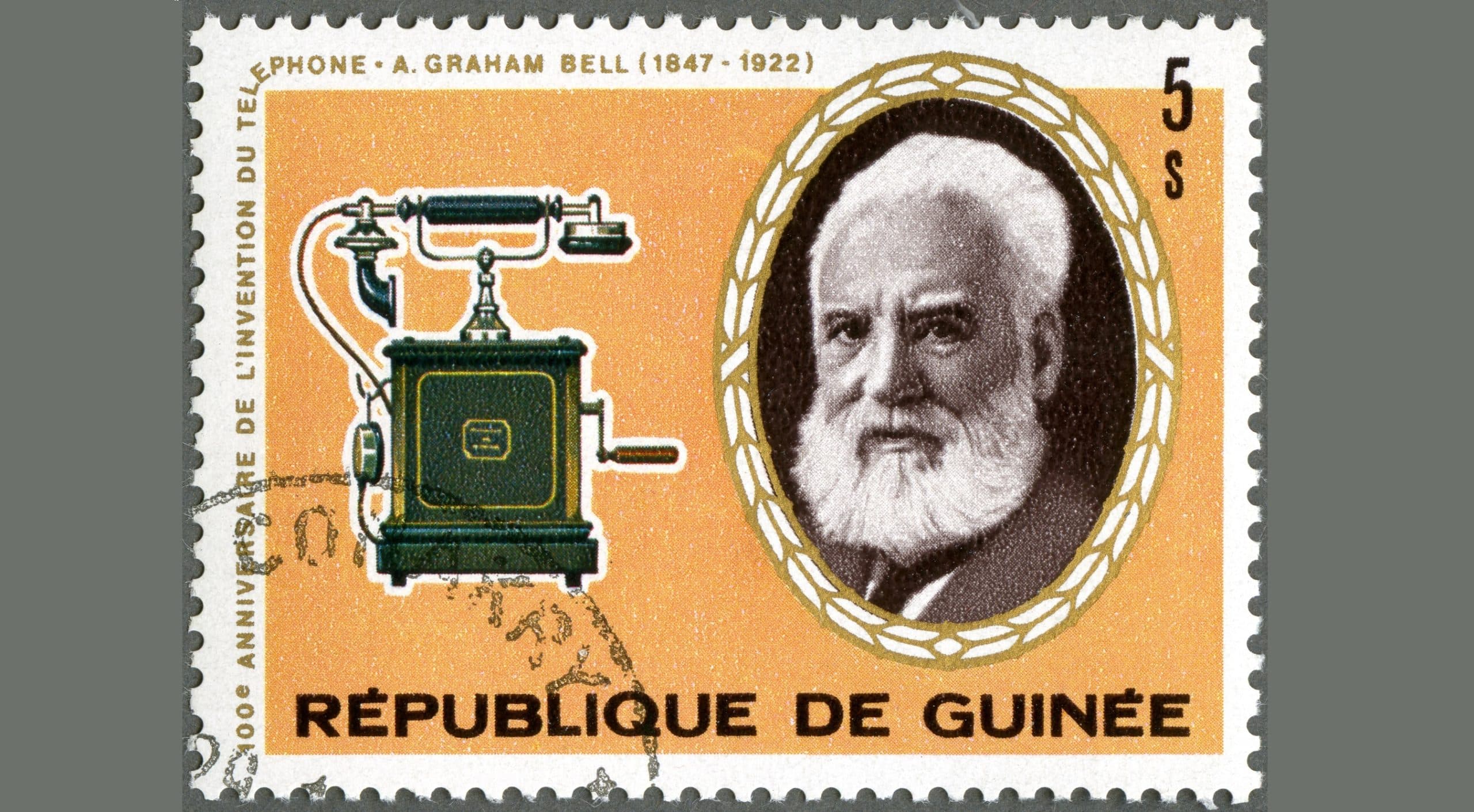Ancestors
Alexander Graham Bell was the man who invented the first working telephone. But it was not through his own efforts alone. It was actually the result of the accumulation of knowledge gathered through three generations of the study of sound. So, even though Alexander Graham Bell might have invented the telephone, he should actually thank his grandfather, who started it all.
Alexander Graham Bell's ancestors were shoemakers who lived in Fifeshire, an area in eastern Scotland. In the early nineteenth century, elocution, or public speaking, became famous as an art and science. So, Alexander's grandfather Alexander Bell moved away from Fifeshire and started to learn elocution. But as he became skilled in elocution and started teaching it, his interest turned towards stammering. So, he began researching about it and soon wrote a book called The Practical Elocutionist. It was a book that tried to visualize speech by using a system of symbols, which looked like commas, to indicate word groupings and emphasis.
Alexander Bell's youngest son, Alexander Melville Bell, also took a liking to his father's profession. So, he started using his father's methods to treat stammerers. He gradually became successful at that and gained public fame. But in 1842, he moved to England. There, along with his father, he started investigating how the interaction between different vocal organs produces voice.
Birth
In 1843, Melville traveled to Edinburgh, Scotland, where he started lecturing about public speaking at the University of Edinburgh. While he was in Edinburgh, he met Eliza Grace Symonds. She was an English painter who was ten years older than him and was partially deaf. Since their first meeting, Melville was drawn to her, partially because of her intelligence but mostly out of sympathy for her partial deafness. Soon they fell in love. So, one year later, Melville moved to Edinburgh and married Eliza.
Alexander Melville Bell and Eliza Grace Symonds had three children. Their first son, Melville James Bell, was born in 1845. Alexander Bell, their second son, was born in 1847. Their third son, Edward Charles Bell was born in 1848.
Early Life and Family
Alexander Bell becomes Alexander Graham Bell
Of their three sons, only their second son Alexander Bell didn't have a middle name. So, when he was ten years old, Alexander Bell begged his father to let him have a middle name like his brothers. At that time, Alexander Melville Bell had a student called Alexander Graham, who became their family friend. Inspired by him, Alexander Bell wanted to take Alexander Graham's surname as his middle name. He soon got his father's permission, and so, on his eleventh birthday, Alexander Bell became Alexander Graham Bell. However, his family members still called him Aleck, which was his nickname.
Schooling
Like most children of that era, Alexander Graham Bell and his brothers were initially taught by their parents. Alexander Graham Bell's love for music, art, and poetry came from his mother. Motivated by her encouragement, he learned Piano by himself and became the family's pianist. He also excelled in mimicry and tricks like ventriloquism, which he used to entertain family guests. At one point in time, Alexander Graham Bell even wanted to become a professional musician. However, that desire eventually disappeared. But it did kindle in him a desire to study sound.
While his mother instilled in Alexander a love for music, his father instilled in him a love for biology. So, even as a child, he started collecting botanic samples and doing experiments on his own. These experiments he conducted as a child laid the foundation for the inventor he would later become.
Alexander Graham Bell's formal education began at the age of ten when he joined the Royal High School in Scotland. Even though he would later become an inventor, his initial school grades and attendance did not reflect that. According to his own words, he was a poor student who lacked ambition. The only subject that interested him was science, especially biography. Other subjects did not interest him. During those days, he often spent his time in school alone and dreaming.
Childhood innovations
As a kid, Alexander Graham Bell might not have been good at school. But he was always curious and had a desire to invent. When Alexander Graham Bell was 12 years old, he had a friend called Benjamin Herdman. His father owned the Herdman flour mill. The boys would often play in the mill and make a mess there.
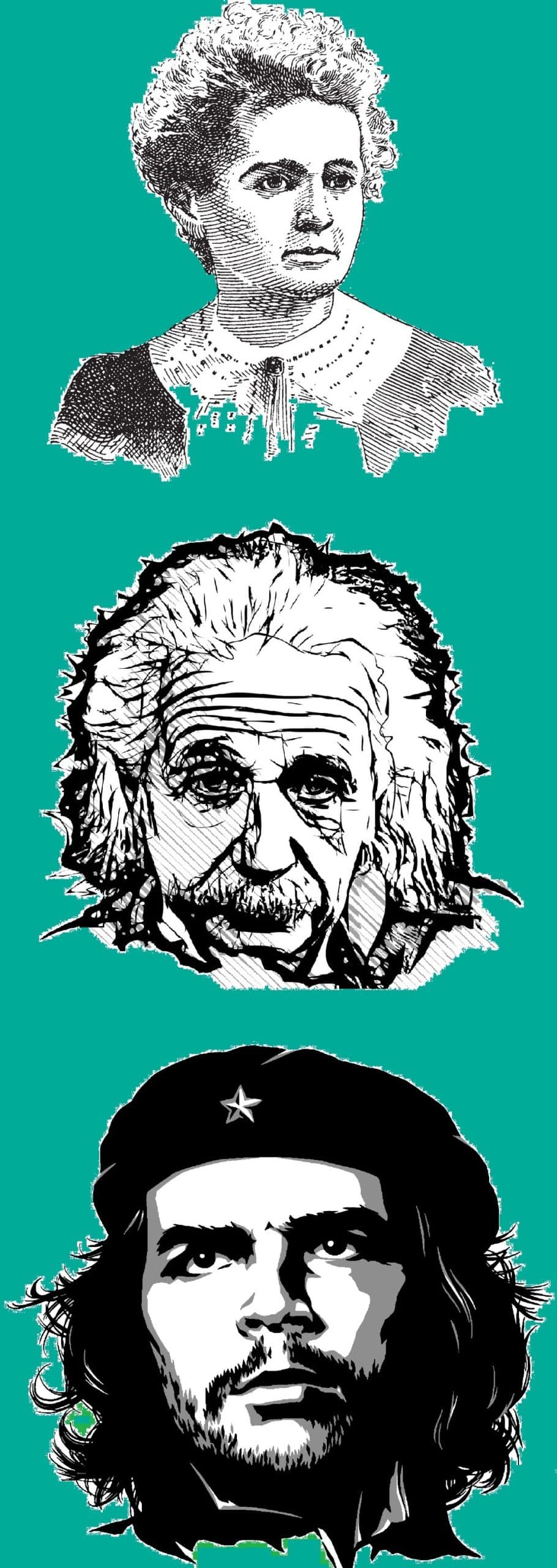
A Titbit About A GREAT Personality In Your Inbox Everyday
Find out how people changed our world and made history while doing it. Find out what motivated them to become their best self. Find out how they found innovative solutions to impossible problems.
Get a peek into the life of a great personality every day.
One day, Benjamin's father finally got fed up with them and remarked that they could do something useful instead of playing. Those days, wheat was separated from the husk by hand. It was a manual and excruciating process. So, when the boys inquired about how they could help him, Benjamin's father gave them a handful of grains and asked them to separate the wheat from the husk. However, Alexander surprised him by building a machine to separate the wheat from the husk instead of doing it manually. This machine, built using rotating paddles and wire brushes on an existing device, was used by the Herdman flour mill for many years after that.
The event that changed Alexander Graham Bell
By the age of fifteen, Alexander, who had no interest in formal schooling, left school without graduating. His parents then sent him to live with his paternal grandfather Alexander Bell, whose wife had recently died. This would turn out to be an important event in Alexander's life, which changed him completely.
Alexander's grandfather made him ashamed of his ignorance of subjects that kids of his age would normally know. This motivated him to overcome his defects in education by studying meticulously of his own. His grandfather, an expert on public speaking, also made him realize the importance of speech. His grandfather considered speech the single most important skill for mankind. So, he taught Alexander to speak with conviction so that he could become a teacher too. Soon, Alexander became interested in speech too.
The mechanical man
Alexander's newfound interest in speech impressed his father. So, his father took Alexander and his brothers to see the mechanical man. The mechanical man is a speech synthesizer created by an English scientist based on a book written by a Hungarian inventor. Alexander and his brother were thrilled at how the device could produce a human voice. So, Alexander obtained the book and translated it from German to English on his own. Then they constructed a mechanical head that looked lifelike, with a skull, throat, Larynx, and lips. Even though the mechanical head synthesized only a few words with a human voice, it was a big success for the teenager.
Motivated by their initial success at producing human voice using a machine, Alexander decided to test the same approach on a live subject. The live subject he chose for this purpose was their dog. First, Alexander taught the dog to growl continuously. Then, as it growled, he would adjust its lips, and at the same time, he would also reach into the dog's mouth and adjust its vocal cords. So, the dog's continuous growl would sound faintly like the sentence, "How are you, grandma?" Thus, Alexander succeeded in creating a talking dog, even though it could speak only one sentence.
Becoming a pupil-teacher
Until the nineteenth century, education was a luxury. So, only the upper classes of the economy were taught by professional teachers. But at the beginning of the nineteenth century, teaching for the masses began, and hence, the demand for teachers increased. This gave rise to a training program called the pupil-teacher system. In this program, students of higher classes, who were at least 13 years old, worked as apprentices to teachers. For five years, they learned through observation and practical application while simultaneously finishing their studies. By the twentieth century, the system was scrapped due to the lack of an adequate theoretical foundation.
When he was 16 years old, Alexander decided to be on his own. But he hadn't finished his schooling yet. So, he began working as a pupil-teacher of elocution and music.
Fascination with the telegraph
Meanwhile, Alexander continued his experiments on speech using cats and dogs. The experiments he conducted during these days helped him understand how vowels are formed in our vocal cords. These experiments also motivated him to study more about sound. Telegraph, a device that transmitted text messages through electric currents, also caught Alexander's attention. So, fascinated by sound and motivated by the concept of the telegraph, Alexander decided to convey sound using electricity. For this purpose, he even installed a telegraph wire from his room to his friend's room.
But Alexander's profession as a pupil-teacher and his rigorous experiments on sound took a toll on his body. So, by 1867, he was totally exhausted and was bedridden. Similarly, his younger brother, who was suffering from Tuberculosis, was also bedridden. However, while Alexander's health improved gradually, his younger brother's health deteriorated even further, and he died the same year. After his younger brother's death, Alexander stayed home and started preparing for the entrance exams for the University College in London.
Working with his father
The same year, his father developed a revolutionary system called Visible speech.
Perils faced by deaf people
When we were babies, we learned to talk by listening to the words our parents and teachers speak and repeating those words. But babies born deaf cannot hear what others speak. So, as they grow up, they do not develop the ability to talk. So, deaf children end up being mute all their life.
Today, we accept deaf people as a part of the society we live in. But a few hundred years back, deaf people were alienated by both society and their own families. The deaf were not permitted by the church to attend the holy communion because they could not confess aloud. They were not permitted by their own families to inherit wealth. They were not even permitted to marry because people believed that their children will also be born deaf. If there was a way for deaf people to communicate with others, people would stop seeing deafness as a disability, and society would eventually accept them.
Manualism and Oralism
So, to help deaf people interact with society, two methods of education developed. The first method, called manualism, aimed at teaching deaf people sign language. The second method, called oralism, aimed at teaching deaf people lip reading and mimicking the breathing patterns and mouth shapes that create speech. Today a combination of both these methods are employed to help deaf people interact with others.
Visible Speech
Visible speech, the system developed by Alexander's father, made oralism famous in the 1860s. It is a visual representation of sounds. The system is made up of symbols that depict the position and movement of lips, tongue, and throat as we speak a language. A person who read the text written using Visible speech and reproduced the position and movement of lips, tongue, and throat, exactly as indicated, could recreate the original sentence, including the accent with which it was spoken. Using this system a person can reproduce any sentence spoken in any language. So, Älexander, who was fascinated by sound and wanted to find out how it was produced in our vocal cords, soon developed a liking for it. Therefore, he learned the system developed by his father and became an expert in it.
Alexander's father believed that Visible speech could help the deaf in learning to speak. So, to garner public support for Visible speech, Alexander's father took Alexander to public demonstrations. In these demonstrations, Alexander's father would ask a volunteer to speak. Then, Alexander would come on stage and read out the Visible speech transcript of the volunteer's spoken words and surprise everyone by saying it out exactly as the volunteer had said it. Soon public support for the system increased, and Alexander started to teach two deaf girls personally. Both of them made tremendous progress under his guidance.
Meanwhile, in 1868, Alexander also passed the entrance exams for the University College in London and joined the college to study anatomy and physiology.
Moving to Canada
Thus, by the late 1860s, Alexander started to earn a career for himself as the teacher of the deaf. Moreover, his studies were progressing in a positive direction too. But in 1870, his elder brother died due to Tuberculosis too. So, Alexander's parents, who were hellbent on keeping their only remaining son alive, decided to move to Canada. Hence, they sold all their properties in London. At the same time, Alexander himself had to drop out of college and end the relationship with his then-girlfriend as they were moving to Canada.
After moving to Canada, Alexander stayed with his parents for a while. Then, in April 1871, he moved to Boston, USA, and started teaching in a school there. He also started demonstrating Visible speech, as he had done in London. In the USA, people believed that children born deaf can never learn to speak. So, Alexander's demonstrations were met with huge enthusiasm, as it meant that the deaf can learn to speak. Due to these demonstrations, demand for Alexander's teaching skills increased tremendously. So, Alexander opened his own school for the deaf in Boston in 1872.
Meeting his future wife
In 1872, Alexander met Gardiner Greene Hubbard, the president of a school where Alexander demonstrated Visible speech, to ask for a recommendation. Amazed by his skills, Gardiner asked Alexander to teach his daughter, who had lost her hearing at the age of five. So, the 26-year-old Alexander Graham Bell started teaching the 15-year-old Mabel Hubbard. Despite the 11 year age difference, Alexander fell for Mabel instantly. Soon, they fell in love and married five years later. Even though Mabel was deaf, she stayed by Alexander's side as his supporter, friend, and partner until his death.
The telephone
Attempting to transmit multiple messages through a single telegraph wire
Even after coming to Boston, Alexander's fascination for the telegraph continued. But until now, only a single message could be sent through a telegraph. So, Alexander decided to create a telegraph which would enable its user to send multiple messages through a single wire. Gardiner, who himself was a fan of inventions that had anything to do with the telegraph, immediately started supporting Alexander.
Coming up with the idea
The school Alexander started for the deaf soon became a part of the Boston University. In 1873, Alexander also started working as a professor of Vocal Physiology and Elocution at the same university. His job as a professor was to train teachers to teach the deaf. While working at the University, Alexander got the chance to observe the functioning of the phonautograph.
The phonautograph is the first device that was created to record sound. It consists of a barrel whose one end is narrow and the other end is wide. The narrow end is covered with a thin membrane, which simulates the human eardrum and is connected to a needle. When someone speaks on to the wide end of the barrel, the membrane on the narrow end vibrates due to the variations in the voice and moves the needle, which traces a line plot on a piece of paper or glass.
After observing the functioning of this device, Alexander decided that if the variations in human voice can be recorded on a sheet of paper as a line graph, it should also be possible to create an electric current whose intensity changes according to the variations in the human voice. So, even though his work on the transmission of multiple telegraph messages was picking up speed, he abandoned it. Instead, he started focussing on transmitting sound through a telegraph wire. In other words, he decided to invent the telephone.
Solving the biggest problem
Alexander was neither the only person nor the first person to come up with the idea of a telephone. However, he was the first person to solve the problem of converting sound into an oscillating electric current at the transmitter and converting the same oscillating electric current into sound at the receiver. The experiments he conducted on electrical induction and the phonautograph helped him formulate a theory. According to that theory, magnetized reeds that vibrate due to sound should produce an oscillating electric current at the transmitter. This electric current could be transmitted through a wire to a receiver. At the receiver, an electromagnet would convert the incoming oscillating electric current into pulses that would vibrate a diaphragm to produce the original sound.
Hiring Thomas A.Watson
Even though Alexander had it all planned out in theory, he had no working knowledge of electricity. So, he hired Thomas A.Watson, an expert electrical designer and mechanic, to help him build the machine.
On June 2nd, 1875, Alexander and Watson were doing an experiment to transmit multiple telegraph messages over a single wire. They had built three sets of transmitters and receivers in different rooms for this purpose. When Watson plucked a reed because it was stuck to the electromagnet, the reed started vibrating. This vibration was converted into an electric current, which reached the electromagnet in Alexander's room, that vibrated the reed attached to it. So, Alexander was able to hear the reproduced vibration of the reed in another room.
Filing the most profitable patent
Thus, now, Alexander was sure that his idea would work. So, he applied for a patent, titled 'Improvements in Telegraph,' and received it on March 7th, 1876. It would go on to become the most profitable patent in the history of the invention.
The first sentence ever spoken through a telephone
Meanwhile, Alexander and Watson built a telephone with a transmitter and a receiver in two different rooms. The transmitter even had a mouthpiece through which Alexander could talk. Three days after the patent was issued, Alexander tested the telephone they had built. He said the words "Mr. Watson—Come here—I want to see you" through the telephone. Watson, who was in another room, could hear it clearly. Thus, on March 10th, 1876, Alexander successfully created the first working telephone.
Improvements
Over the next few months, Alexander and Watson improved upon their invention. They tested it by increasing the distance between the transmitter and receiver to several miles. Until now, the telephone only worked as one-way communication. So, then they built a transmitter and receiver at both ends to make two-way communication possible. They tested the first two-way communication over the telephone on October 9th, 1876.
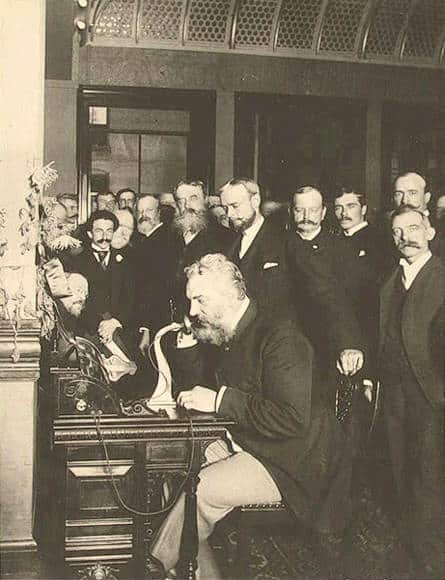
Alexander Graham Bell, testing long distance communication, from New York to Chicago, 1892 - By Gilbert H. Grosvenor Collection, Prints and Photographs Division, Library of Congress. - http://www.americaslibrary.gov/jb/recon/jb_recon_telephone_1_e.html, Public Domain, Link
After testing the two-way conversation, Alexander tried to sell the patent for the telephone to Western Union for $100,000. The Western Union is a company that ruled the telegraph market in the USA. However, the president of the Western Union thought that the telephone was a kid's toy that nobody would want. So, he did not buy the patent. Two years later, the telephone became such a valuable invention that the Western Union couldn't have bought the patent even if they had offered $25 million.
The Bell Telephone Company
Following the successful invention of the telephone, Alexander's father-in-law helped him in establishing the Bell Telephone company in 1877. After a series of mergers, it became the American Telephone & Telegraph Company (AT&T).
Even though Alexander had invented the first working telephone, he wasn't the first one or the only one to conceive the idea of the telephone. So, the Bell Company faced hundreds of court cases that challenged its patents. But Alexander had a habit of writing letters to his father consistently. In these letters, he had explained the concepts that eventually led to the invention of the telephone. These letters proved that Alexander had indeed come up with the concepts himself and helped the company defend its patents.
After founding the Bell Telephone company in 1877, Alexander married Mabel. Together, they had four children - two daughters and two sons.
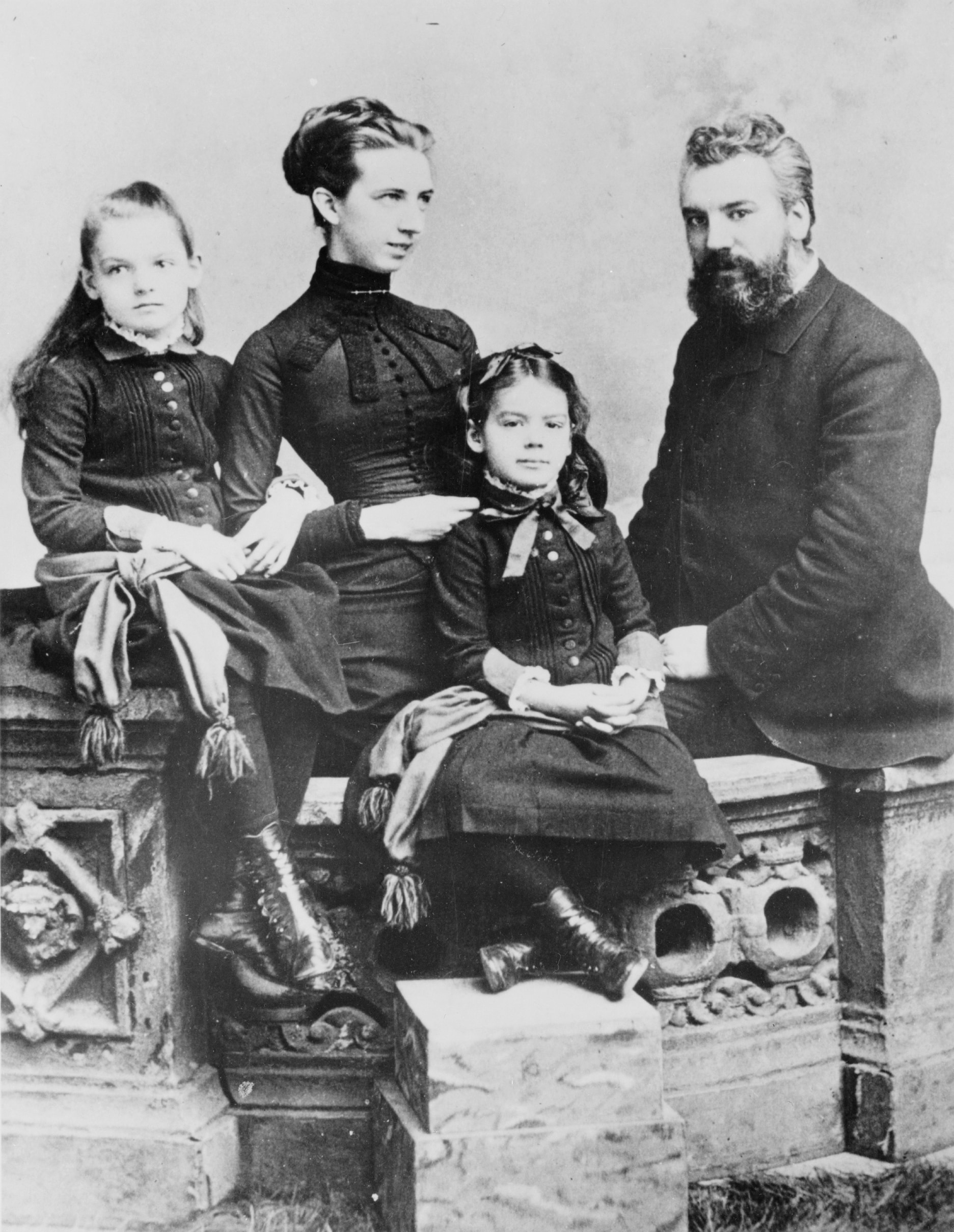
Alexander Graham Bell with his wife and two daughters, 1885 - By Not listed; part of the LOC's Gilbert H. Grosvenor Collection of Photographs of the Alexander Graham Bell Family. - This image is available from the United States Library of Congress's Prints and Photographs division under the digital ID ppmsc.00856. This tag does not indicate the copyright status of the attached work. A normal copyright tag is still required. See Commons:Licensing for more information., Public Domain, Link
In the months that followed, Alexander made several public demonstrations to introduce the telephone to the public. Thanks to his efforts, the telephone soon became a widely used gadget in the United States. By the year 1886, around 150,000 people in the USA had telephones.
Other inventions
The telephone is a very important invention in history. So, it earned Alexander several awards with big prize money. But Alexander Graham Bell was a man of varied interests. So, his journey as a scientist did not end there as he continued to invent other devices.
Photophone and metal detector
In 1880, Alexander and his assistant invented the photophone. The photophone is a wireless telephone that could send human voices over a beam of light. It would become the forerunner to the fiber-optic communication that became famous a hundred years later.
Alexander also invented a crude version of a metal detector.
Attempts at building the first airplane
On September 23rd, 1877, after watching a seagull flying, Alexander decided to build a flying machine. So, he drew a sketch of a flying machine. In 1891, he started to build the flying machine from this sketch. He conducted several hundreds of experiments, most of which failed.
In the 1890s, while conducting his own experiments on aviation, Alexander predicted that the problem of aviation would be solved within 10 years. Just like he had predicted, the Wright brothers made the first successful flight in 1903. A few years later, in 1907, Alexander formed the Aerial Experiment Association. At the insistence of his wife, he hired young men to help him since he was already 60 years old. Together, they conducted more than 1,200 experiments over several decades, sometimes even using gunpowder for propulsion. The planes they built achieved several feats, like winning the Scientific American Trophy for flying over a kilometer, achieving a total flying distance of more than a thousand miles, and making the first flight in Canada. Moreover, Alexander also contributed to aerospace research by providing funds to Aerial Experiment Association.
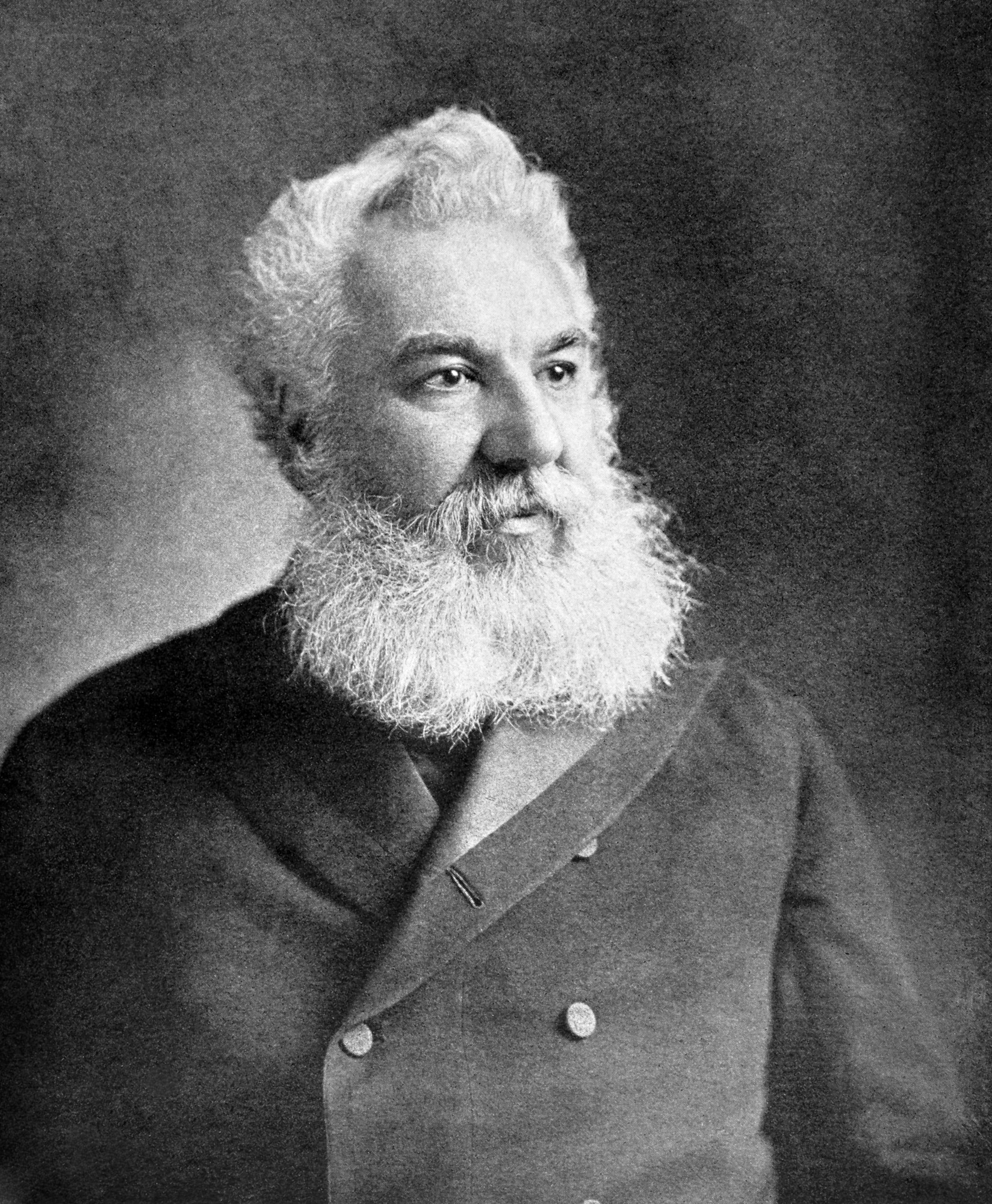
Alexander Graham Bell, 1899.
The teacher of the deaf
Thus, today, the world sees Alexander Graham Bell as a curious inventor and a successful scientist. However, he saw himself as a teacher of the deaf above everything else. After all, both his mother and wife, the two most important women in his life, were deaf. So, he wanted to make the world a better place for the deaf. Hence, he dismissed manualism, like sign language, because it alienated the deaf. Therefore, he improved upon his father's system of Visible speech to teach the deaf to talk. For this purpose, he also dismissed the idea of deaf teachers.
Alexander Graham Bell also made generous contributions to the deaf society throughout his life. In 1887, Alexander met the famous deaf, mute, and blind girl Helen Keller. Alexander maintained a friendship with the Kellers for the next 30 years and created a trust fund for her education. Helen Keller's father brought her to Alexander Graham Bell to see if he could help her. It was Alexander who referred Helen Keller to the Perkin's Institute for the blind. Perkin's Institute then sent Anne Sullivan to teach Helen Keller, who completely transformed Helen's life. Helen, in turn, brought several improvements for the blind community.
Death
Alexander Graham Bell, whose life greatly benefited the scientific community and the deaf community, died on August 2nd, 1922. Aged 75, he died due to Diabetes, with his wife by his side.
Facts you probably didn't know:
Antonio Meucci and Alexander Graham Bell
Antonio Meucci was an Italian inventor who settled in the USA. According to several sources, he invented the electromagnetic telephone in 1860, 16 years before Alexander.
Antonio used the telephone he invented to communicate with his bedridden wife, who was in the second-floor bedroom, from his laboratory on the ground floor. However, he did not have enough money to file a patent to get ownership of his invention. So, in 1871, he filed a patent caveat, which was an official notice informing that he would file a patent later. Until then, nobody can file a patent for his invention. However, unlike a patent, a Caveat is only valid for one year. So, the caveat applicant must renew it every year. Antonio renewed the caveat until 1873. After that, he did not have enough money to renew it. So, it expired in 1874.
The same year, he sent his telephone model to the Western Union telegraph company, asking for permission to test his device on their telegraph wires. After not hearing back from them, he asked them to return his materials. But he was told that his materials were lost. Two years later, Alexander Graham Bell, who conducted experiments in the same laboratory that contained Antonio's materials were stored, filed a patent for the telephone.
So, Antonio filed a case contesting Alexander's patent. However, despite going in Antonio's favor, the case came to a close when Antonio died in 1889. Some people still believe that if Antonio had renewed his patent caveat for two more years, Alexander wouldn't have been able to get his patent.
Elisha Gray and Alexander Graham Bell
On February 14th, 1876, Elisha Gray, an American electrical engineer, filed for a patent caveat for a water transmitter to transmit speech. The same day, Alexander Graham Bell also filed for a patent for his telephone. It is not sure who came first to the patent office. But Alexander Graham Bell is the one who got the patent. But Alexander used Elisha's water transmitter in his telephone initially to test its function. He claimed that he used it only to verify the functioning of Elisha's device. However, after the initial use of Elisha's device in his telephone, he did not use it again. But the patent examiner claimed that Alexander paid $100 to show Elisha's patent caveat to him, which Alexander denied.
A man of varied interests
Alexander Graham Bell was a man of varied interests. He held 18 patents in his name and shared 12 more with other collaborators.
What to read next?
If you liked reading this biography of Alexander Graham Bell, you will love the following blog posts too:

